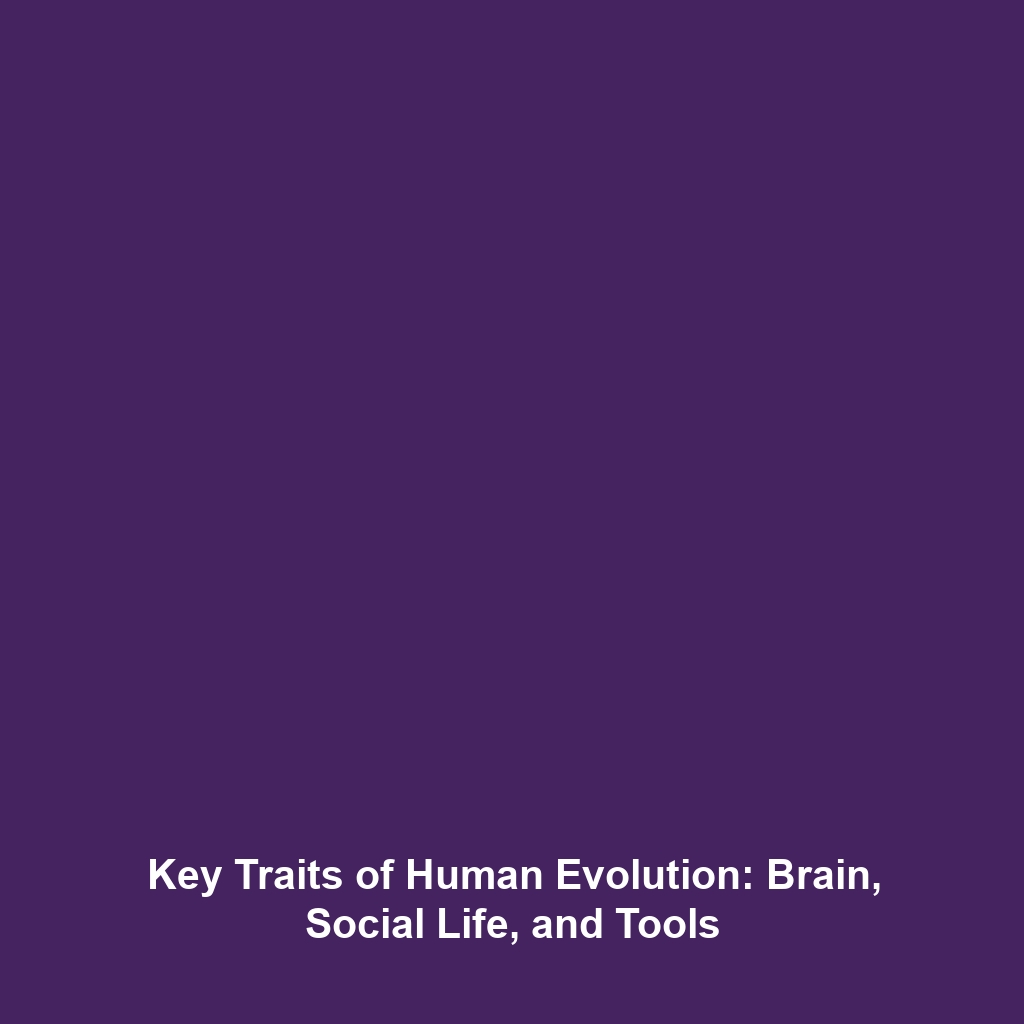Language Evolution: Fossil Evidence of Vocal Anatomy and the Emergence of Complex Language
Introduction: The evolution of language is a cornerstone of human development, influencing
both social structures and cultural transmission. Fossil evidence indicating the anatomical adaptations of
human vocalizations offers a fascinating glimpse into how early hominins may have communicated. Understanding
this evolution not only sheds light on our past but also emphasizes the significance of language as a driver
of social cooperation. As we delve into this intricate relationship, it becomes clear that the study of language
evolution is intertwined with broader themes in Human Evolution.
Key Concepts of Language Evolution
Language evolution encompasses several critical principles that highlight the interplay between vocal anatomy
and social behavior. Major concepts include:
- Vocal Anatomy: Fossils of early humans, such as the Neanderthals and Homo erectus, reveal notable
adaptations in the vocal tract that suggest an ability for more complex sounds. - Social Cooperation: The emergence of complex language likely facilitated intricate social
interactions, fostering group cohesion and enhancing survival. - Cultural Transmission: Language plays a crucial role in passing knowledge, traditions,
and cultural norms from one generation to the next, thus shaping human societies.
Applications and Real-World Uses
The implications of understanding language evolution extend into various practical applications
in the realm of Human Evolution, such as:
- Education: Insights into language development can inform teaching methodologies and
enhance curriculum design. - Anthropology: Fossil evidence can aid in reconstructing the social structure and cultural
practices of ancient humans. - Speech Therapy: Understanding vocal anatomy evolution supports therapies aimed at treating
speech disorders.
Current Challenges in Language Evolution Studies
While the study of language evolution yields a wealth of knowledge, several challenges persist:
- Inconsistencies in fossil records make it difficult to establish a clear timeline for language emergence.
- Current methodologies may not accurately assess the complexities of ancient vocal systems.
- The interdisciplinary nature of the field complicates collaboration between linguists, archaeologists,
and biologists.
Future Research and Innovations
Advancements in research are poised to enhance our understanding of the relationship between language
evolution and Human Evolution. Upcoming innovations include:
- Genomic Analysis: Genetic studies may unlock new insights about the evolution of language
capabilities in hominins. - Artificial Intelligence: AI models can simulate language evolution scenarios based on fossil
evidence, providing clarity on how communication may have developed. - Interdisciplinary Approaches: Future research will flow from collaboration across diverse fields, which may yield groundbreaking understandings.
Conclusion
In summary, the exploration of language evolution through fossil evidence of vocal anatomy
illustrates its fundamental role in shaping social cooperation and cultural transmission throughout Human Evolution. As research progresses, the connection between language and human development becomes increasingly evident. For further reading on how these themes intertwine, check out our articles on Social Cooperation and Cultural Transmission in Humans.

